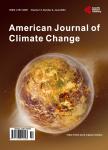Segmentation and Classification of Individual Clouds in Images Captured with Horizon-Aimed Cameras for Nowcasting of Solar Irradiance Absorption
Segmentation and Classification of Individual Clouds in Images Captured with Horizon-Aimed Cameras for Nowcasting of Solar Irradiance Absorption作者机构:PPGCC-INE UFSC Federal University of Santa Catarina Florianopolis Brazil FOTOVOLTAICA INPE Brazilian National Institute for Space Research Sao Paulo Brazil
出 版 物:《American Journal of Climate Change》 (美国气候变化期刊(英文))
年 卷 期:2023年第12卷第4期
页 面:628-654页
学科分类:08[工学] 0812[工学-计算机科学与技术(可授工学、理学学位)]
主 题:Segmentation Cloud Nowcasting
摘 要:One important aspect of solar energy generation especially in inter-tropical sites is the local variability of clouds. Satellite images do not have temporal resolution enough to nowcast its impacts on solar plants, this monitoring is made by local cameras. However, cloud detection and monitoring are not trivial due to cloud shape dynamics, the camera is a linear and self-adjusting device, with fish-eye lenses generating a flat image that distorts images near the horizon. The present work focuses on cloud identification to predict its effects on solar plants that are distinct for every site’s climatology and geography. We used RASPBERY-PI-based cameras pointed at the horizon to allow observation of clouds’ vertical distribution, not possible with a unique fish-eye lens. A large number of cloud image identification analyses led the researchers to use deep learning methods such as U-net, HRnet, and Detectron. We use transfer learning with weights trained over the “2012 ILSVRC ImageNet data set and architecture configurations like Resnet, Efficient, and Detectron2. While cloud identification proved a difficult task, we achieved the best results by using Jaccard Coefficient as a validation metric, with the best model being a U-net with Resnet18 using 486 × 648 resolution. This model had an average IoU of 0.6, indicating a satisfactory performance in cloud segmentation. We also observed that the data imbalance affected the overall performance of all models, with the tree class creating a favorable bias. The HRNet model, which works with different resolutions, showed promising results with a more refined segmentation at the pixel level, but it was not necessary to detect the most predominant clouds in the sky. We are currently working on balancing the dataset and mapping out data augmentation transformations for our next experiments. Our ultimate goal is to use such models to predict cloud motion and forecast the impact it will have on solar power generation. The present



